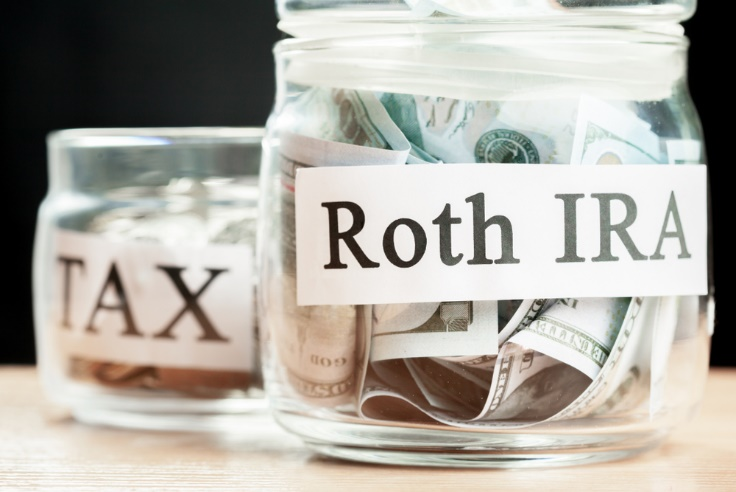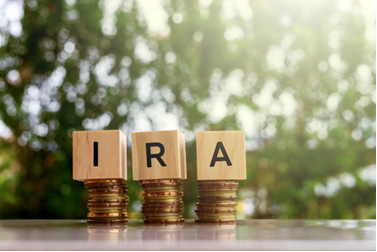One thing that every investor wants to avoid is paying taxes. Having to pay taxes takes a tremendous cut out of the value of your investments, eating significantly into your investment returns. That’s why so many investors turn to tax-advantaged retirement accounts such as 401(k)s and IRAs, since they allow investors to defer taxation on their investment gains until they decide to take a distribution.
But what happens if you find yourself in a crunch and really need money quickly? While you can take money out of your IRA before you turn age 59 ½, you’ll not only pay taxes on that withdrawal, but you’ll also pay a 10% penalty for taking an early distribution.
Once you turn 70 ½ you’ll be forced to take required minimum distributions (RMDs). If you fail to take enough money in distributions, you’ll once again have to pay a penalty. And if you haven’t structured your retirement accounts correctly, you could end up withdrawing more money than you need and paying more taxes than you want to.
So how can investors avoid taxes on IRA withdrawals? There are a number of ways to do it, depending on what they need the money for and what level of complexity they’re looking for. From charitable contributions to Qualified Longevity Annuity Contracts (QLACs) to Roth IRAs, there are numerous ways that investors can make sure that their money is available to them when they need it while simultaneously minimizing their tax payments.
Taxes on IRA Withdrawals
Traditional IRAs, which include Simplified Employee Pensions (SEP IRAs), Savings Incentives Matches for Employees of Small Employers (SIMPLE IRAs), and Salary Reduction and Simplified Employee Pension Plans (SARSEP IRAs) are funded through pre-tax contributions from an employee’s salary. In many cases employees can also deduct their IRA contributions from their taxes. This lowers tax liability in the present, while also allowing the money invested to accrue tax-free until distribution.
At distribution time taxes are then owed based on the person’s tax rate. Once you reach age 70 ½ you’re required to take RMDs, which require calculating how much you’re required to withdraw. Failing to withdraw enough money from your IRAs can result in a penalty of as much as 50% of the amount of money that you were required to withdraw but didn’t.
Of course, you can avoid that penalty by withdrawing money earlier, starting at age 59 ½. IRA withdrawals before age 59 ½ will incur a 10% penalty in addition to any taxes owed. The same penalties apply to withdrawals from employer-sponsored 401(k) plans too.
If you want to avoid taxes on IRA and 401(k) withdrawals, there are a few things you can do.
- You can donate IRA assets to charity
- Move money into a QLAC
- Gradually shift your assets into a Roth IRA. While contributing to a Roth IRA is subject to income limits, it’s by far the best way to minimize your liability while still maintaining the use of your money.
1. Using IRA Assets for Charitable Contributions
Donating IRA assets to charity is one way to avoid penalties for failing to take RMDs. But it isn’t just anyone who can do that, and there are various exclusions that apply too. Be sure to consult your tax adviser before making a decision.

In general, qualified charitable distributions can be taken by those who have reached age 70 ½. They can donate up to $100,000 per year of their RMDs to charity. Any funds distributed must be distributed directly to the charity, not to the IRA holder first and then given to charity. And the funds eligible for a qualified charitable distribution cannot then be deducted from your income taxes.
Qualified charitable distributions must be given to 501(c)(3) organizations that are eligible to receive tax-deductible contributions. That excludes private foundations, organizations that support charities, etc.
Making a qualified charitable distribution is a way to avoid tax penalties if your required minimum distribution is more than you want to take in a given year. Since anything you donate to charity counts towards your RMD but doesn’t count towards your annual income, you get the benefit of helping others while reducing your tax burden.
2. Move Money into a QLAC
Qualified longevity annuity contracts (QLACs) are another way that people can minimize their tax liability to the IRS. They’re a relatively recent phenomenon, similar to a deferred annuity, and resulted from a US Treasury Department ruling in 2014.
In setting up a QLAC you can exempt 25% of your IRA from RMD requirements, up to a maximum total of $130,000. If you have $160,000 in your IRA you can transfer $40,000 to a QLAC; if you have $800,000 in an IRA, you can only transfer $130,000 to a QLAC.
Purchasing a QLAC requires paying a premium too, but it sets up an annuity within your IRA. With a QLAC in place, any funds placed in the QLAC can be exempt from RMDs until you hit age 85. If you think you have the genes to live that long, a QLAC could be an option to minimize your tax liability by reducing the amount of money you’ll be required to take in an RMD.
3. Move Assets Into a Roth IRA

One of the best ways to avoid taxes on IRA withdrawals is by setting up a Roth IRA. Roth IRAs use post-tax dollars, accrue gains tax-free, and aren’t taxed at the time of distribution. Even better, Roth IRAs aren’t subject to RMDs in your lifetime, so you can keep your money earning a return for you well after you turn 70 ½.
Contributing money to a Roth IRA isn’t available for everyone, with phaseouts beginning at modified adjust gross income (MAGI) of $193,000 for married couples and $122,000 for singles. Married couples with a MAGI over $203,000 and singles with a MAGI over $137,000 are ineligible for direct contributions to a Roth IRA.
Aside from direct contributions to a Roth IRA, which cannot exceed $6,000 per year ($7,000 for those over age 50), there are also Roth IRA conversions. A Roth IRA conversion involves converting a traditional IRA to a Roth IRA. Taxes are then paid in the year the conversion is done on the assets converted from an IRA to a Roth IRA, but then no more taxes are paid when distributions are taken in the future.
Roth IRAs also result in any heirs not having to pay taxes on distributions from the inherited Roth IRA, unlike traditional IRAs that require heirs to pay taxes on distributions. That can increase the amount of money that your heirs end up receiving.
Roth IRA conversions can be either partial or full, meaning that you don’t have to convert the entirety of your IRA holdings to a Roth IRA. Partial conversions can take place at a single time, every few years, or annually.
By converting an IRA to a Roth IRA you can reduce the amount of money that you’ll need to take in RMDs once you turn 70 ½, reduce your future tax liability, and ensure that you still have retirement assets working for you that won’t need to be distributed during your lifetime if you don’t need them. You can even roll over existing retirement assets into a Roth gold IRA through a gold IRA rollover, allowing you to benefit from the protection of gold while keeping your gains tax-free throughout retirement.
As with any strategy to minimize your tax liability, you’ll want to consult with your tax adviser first before you do anything. Making the wrong move without consulting an expert first can result in tax liabilities and penalties that could set you back years in your retirement planning.
If you have enough assets in an IRA or 401(k) account that future taxation is a concern, and you’re interested in alternatives that can protect your portfolio and minimize the amount of taxes you’ll have to pay, contact the experts at Goldco today. They can help you find just the right products to suit your investment needs.
This article was originally posted on Goldco.




